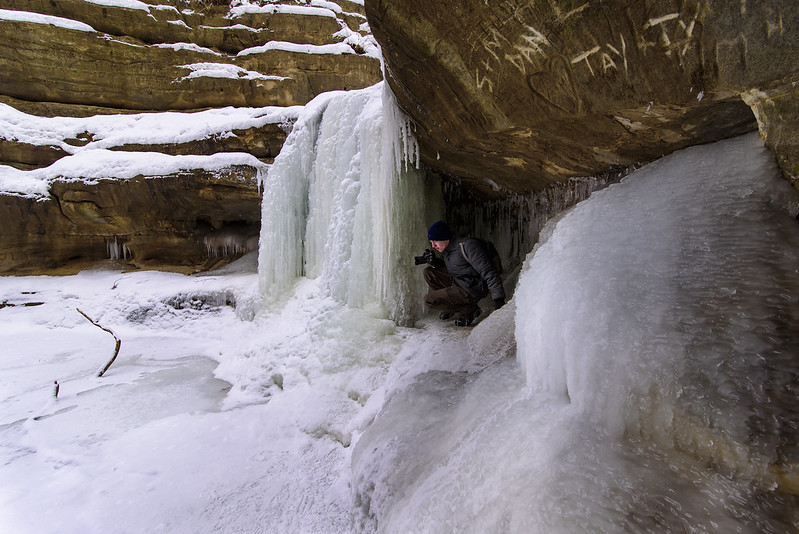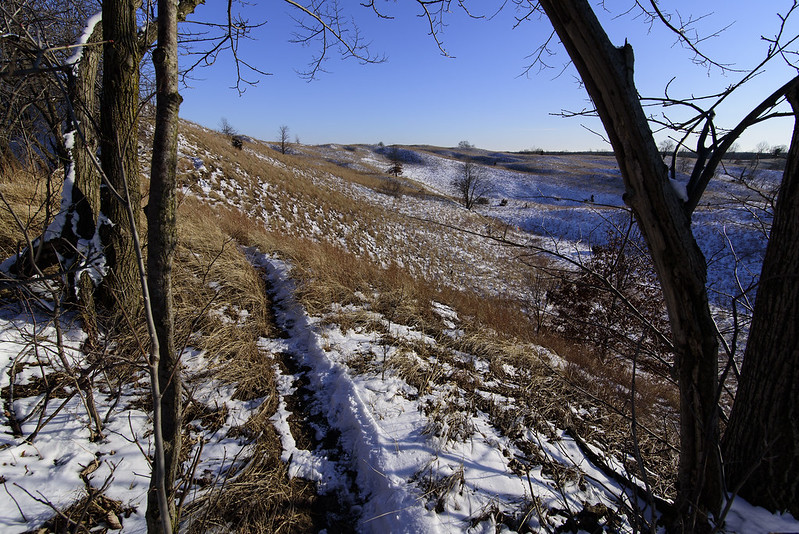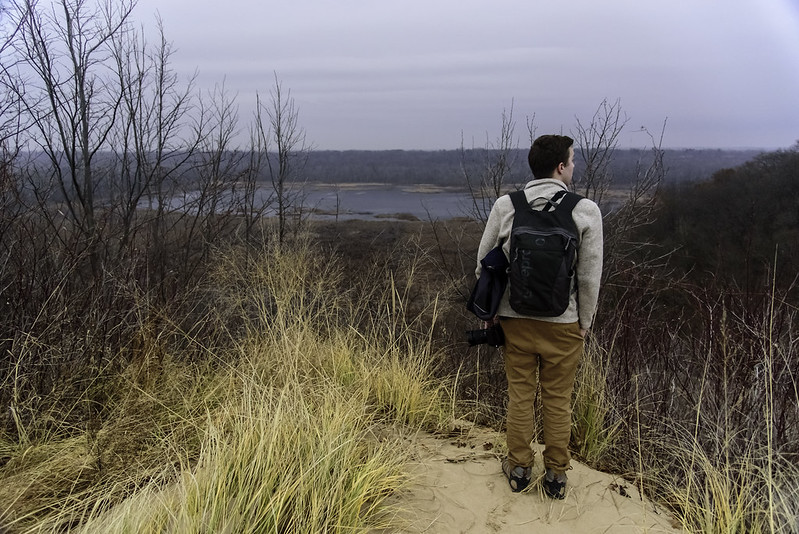
In the same canyon, and only a few meters away, this frozen waterfall is the second we visited and explored. This one is a bit taller, and the stone overhang is deeper, so it's quite a bit easier to get into to explore.
The ice here is a bit thicker than some of the other falls we saw, so the light doesn't penetrate through quite as much, but it still casts a nice color to the ice.

Inside the cave, the moist, cold air created some fancy ice formations. On the stone walls and on the icicles, feather ice formed. This is not too unusual for the empty spaces inside frozen waterfalls, but it very delicate and usually doesn't last long when visitors wander around.

The white icefall contrasts against the dark sandstone canyon walls. Visiting these canyons in the warmer months pays off, you get to know how deep the creeks is and where you can safely walk just in case the ice is thinner than you thought.


















































